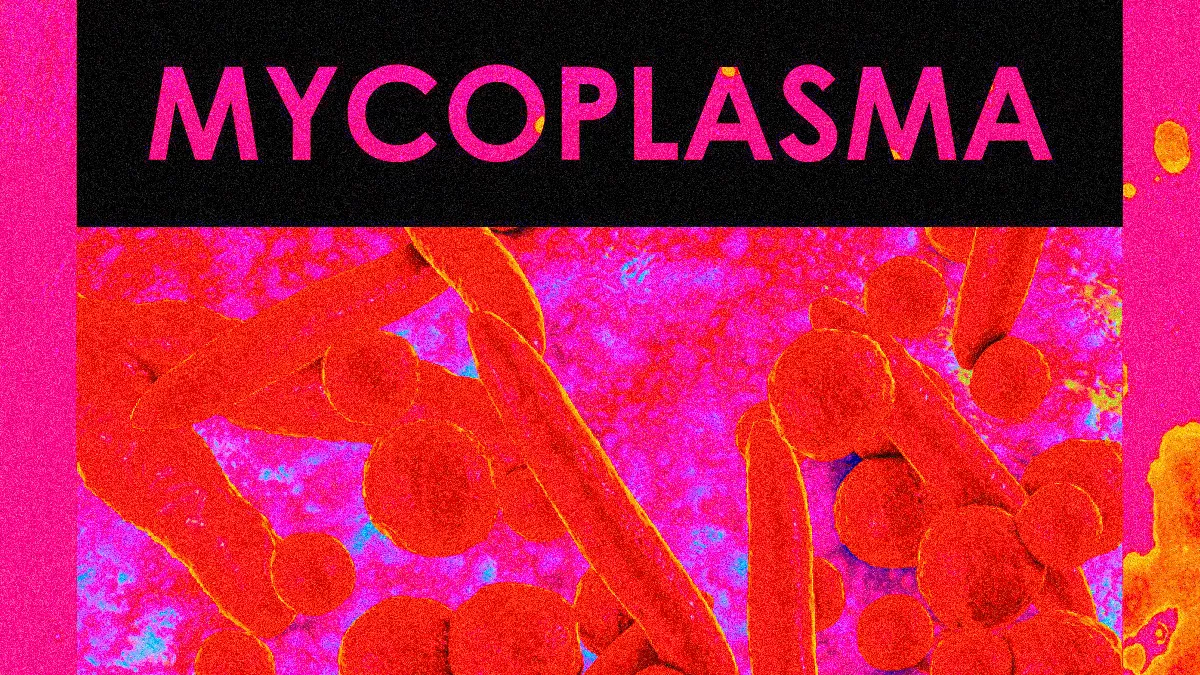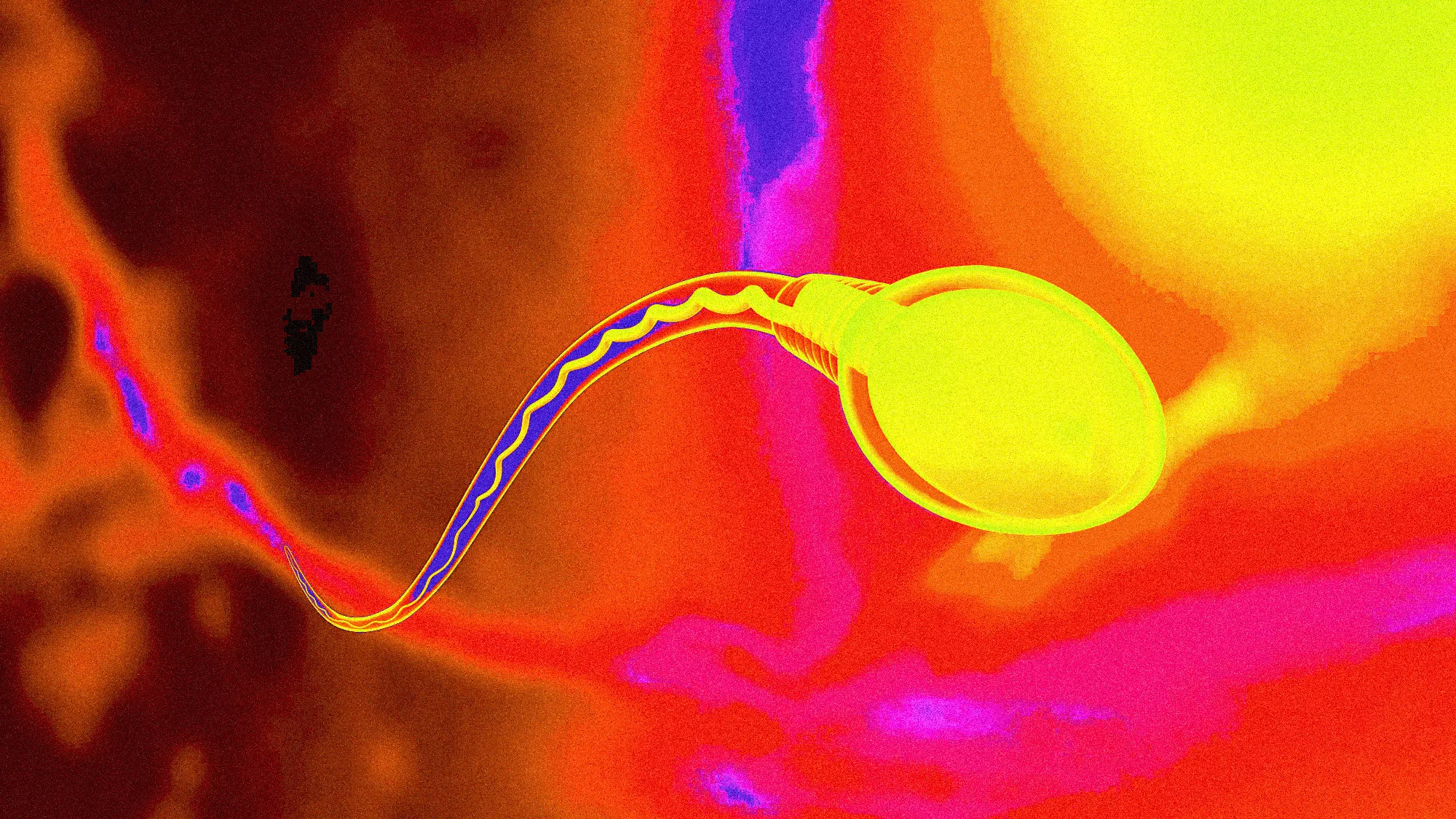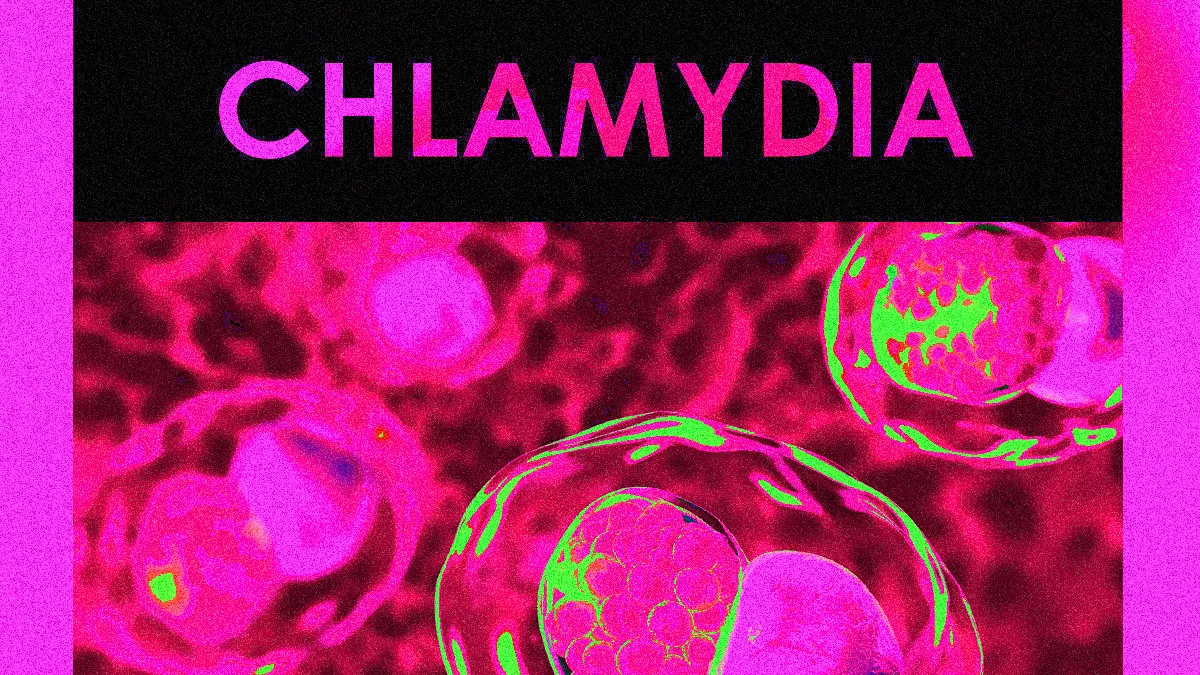Mycoplasma Genitalium
9949
Mycoplasma Genitalium is a sexually transmitted infection causing symptoms like urethritis and pelvic pain. It can be diagnosed and treated.

Mycoplasma genitalium: Challenges in Diagnosis and Treatment
What is Mycoplasma Genitalium?
In 2015, the Centers for Disease Control and Prevention (CDC) classified Mycoplasma genitalium infection as an "emerging issue" in its Sexually Transmitted Diseases Treatment Guidelines. First identified in the 1980s, M. genitalium is increasingly acknowledged as a significant contributor to various sexually transmitted infections (STIs), including urethritis in men and cervicitis in women. Notably, M. genitalium is responsible for more STIs than Neisseria gonorrhoeae and ranks as the second most common STI after Chlamydia trachomatis. Despite its prevalence, diagnosing and treating M. genitalium infections can be challenging.
Infectious Disease Advisor spoke with Dr. Oluwatosin Jaiyeoba Goje from the Ob/Gyn & Women's Health Institute at Cleveland Clinic in Ohio, and Dr. Amesh Adalja, spokesperson for the Infectious Diseases Society of America and Senior Associate at Johns Hopkins Center for Health Security in Baltimore, Maryland, about the difficulties in diagnosing and managing M. genitalium infections.
An Emerging STI
M. genitalium infection is a widespread cause of STIs globally, with prevalence rates ranging from 0.4% among young adults in the United States to 4.5% in the Netherlands. In Sweden, up to 6.3% of patients at a sexually transmitted diseases (STD) clinic were found to have M. genitalium. Despite variations in prevalence between countries, M. genitalium remains the most common STI, second only to Chlamydia trachomatis.
“The prevalence of M. genitalium is particularly alarming because most infected individuals are unaware of their condition,” Dr. Goje noted. “Symptoms can be vague or absent, and if left untreated, M. genitalium can lead to serious health issues, including urethritis, cervicitis, and pelvic inflammatory disease.”
Even when patients do exhibit symptoms, healthcare providers may not consider M. genitalium as a potential cause. “Clinicians are generally less familiar with M. genitalium than with other more commonly treated STIs that they learned about in medical school,” Dr. Adalja explained. “However, M. genitalium is prevalent enough in certain situations that it shouldn't be overlooked.”
Window Period of Mycoplasma Genitalium
Duration:
- The window period for Mycoplasma genitalium typically ranges from 1 week to several weeks post-exposure.
- Symptoms may take time to manifest, and some individuals may remain asymptomatic for longer periods, making it challenging to identify the infection promptly.
Early Symptoms:
- Early symptoms of Mycoplasma genitalium infection can include:
- Painful urination (dysuria)
- Increased discharge from the urethra (in men) or the vagina (in women)
- Pain during intercourse (dyspareunia)
- Abnormal vaginal bleeding in women
- It’s important to note that many individuals may not exhibit noticeable symptoms, which can delay diagnosis.
Importance of Early Detection:
- Early diagnosis and treatment are crucial to prevent complications such as:
- Pelvic inflammatory disease (PID) in women, which can lead to infertility.
- Increased susceptibility to other sexually transmitted infections (STIs).
- Given the potential for asymptomatic cases, regular screenings for sexually active individuals, especially those with multiple partners, are recommended.
If you suspect exposure to Mycoplasma genitalium or experience symptoms, consulting a healthcare provider for timely testing and treatment is important.
Diagnostic Techniques and Challenges
Dr. Adalja emphasizes that M. genitalium infection should be considered in men displaying symptoms of urethritis, which are similar to those of chlamydia and gonorrhea. “M. genitalium is the second most common cause of urethritis, and it has been thoroughly studied in men. Testing is particularly important for those who do not improve after their first course of antibiotics, as M. genitalium often shows resistance to commonly used STI treatments,” he explained.
Dr. Goje also recommends testing for M. genitalium in women experiencing persistent cervicitis symptoms, especially in those who have not responded to empirical antibiotic treatment for chlamydia and gonorrhea and who have tested negative for these pathogens.
However, testing for M. genitalium can be challenging and time-consuming due to the slow growth of the organism. “Isolating and culturing M. genitalium is impractical when immediate antimicrobial treatment is necessary,” Dr. Goje noted.
“Although there is no FDA-approved test for M. genitalium, the nucleic acid amplification test (NAAT) is the preferred method,” Dr. Goje stated. NAAT employs polymerase chain reaction (PCR) and can be conducted on various sample types, including urethral, vaginal, and cervical swabs, as well as urine and endometrial biopsies.
However, NAAT for M. genitalium is based on assays developed for research purposes, meaning it is typically only available in reference labs, usually at large university hospitals. “If you’re at a smaller hospital, it’s crucial to know where testing can be done and which facilities are conducting it in research contexts,” Dr. Adalja explained. “It’s not a test that is readily accessible.”
Contact us at info.bkk@pulse-clinic.com or chat on your preferred platform:
![]() +66 65 237 1936
+66 65 237 1936  @PULSEClinic
@PULSEClinic ![]() PulseClinic
PulseClinic
Management and Antimicrobial Resistance
Significant antimicrobial resistance poses a major challenge in treating M. genitalium infections. Since M. genitalium lacks a cell wall, antibiotics that target cell wall biosynthesis, such as beta-lactams (e.g., penicillins and cephalosporins), are ineffective against this organism, Dr. Goje explained.
Dr. Adalja noted that patients with urethritis often receive an empirical course of doxycycline, which is effective against C. trachomatis but has high treatment failure rates for M. genitalium infections. “More than half of patients with M. genitalium treated with doxycycline may experience microbiological failure,” he said.
Dr. Goje added that patients who do not respond to an initial course of doxycycline typically need a second round of antibiotics, usually consisting of azithromycin for at least five days. However, resistance to azithromycin occurs in up to 50% of M. genitalium cases. In instances where azithromycin fails, the preferred regimen is moxifloxacin 400 mg daily for 7 to 14 days. “Initial reports indicate cure rates with moxifloxacin are 100%, although more research is needed,” Dr. Goje stated.
To mitigate further development of antimicrobial resistance in M. genitalium, Dr. Adalja emphasized the importance of avoiding inappropriate initial antibiotic treatments, such as doxycycline. “Increasing awareness among clinicians that M. genitalium could be responsible for their patient's STI symptoms is crucial. Many clinicians outside the infectious diseases or STI specialties may not be familiar with M. genitalium and its role in STIs, leading them to prescribe incorrect antibiotics inadvertently.”
Dr. Goje pointed out that the challenges in diagnosing M. genitalium infections are significant barriers to effective treatment. “We cannot treat what we cannot diagnose,” she said. “Sometimes, we have no choice but to treat empirically based on signs and symptoms and to rule out other known causes of urethritis and cervicitis.”
PCR Multiplex DNA Test for 28 Infections 




Our STD PCR Multiplex test offers advanced technology to detect up to 28 infections, including Gonorrhea, Chlamydia, Syphilis, Herpes Simplex, Trichomonas, and Candida strains, all in one test. It can identify infections in various anatomical areas, such as the throat, urethra, anorectal region, vagina, cervix, sperm, and skin lesions. For urethral infections, the Urine PCR is recommended, while the Throat Swab PCR is ideal after oral sex. Anal Swab PCR is advised for unprotected anal sex, and the Vaginal Swab PCR is recommended for vaginal sex, with staff guidance available for all tests.
| PCR for 28 Infections (STD Multiplex) | Online results | |||
| Same day** | Next day | 3 days | 7 days | |
| Throat | 14,000 THB | 11,600 THB | 10,480 THB | 9,200 THB |
| Urine | 14,000 THB | 11,600 THB | 10,480 THB | 9,200 THB |
| Anal Swab | 14,000 THB | 11,600 THB | 10,480 THB | 9,200 THB |
| Vaginal Swab | 14,000 THB | 11,600 THB | 10,480 THB | 9,200 THB |
| Cervical Swab | 14,000 THB | 11,600 THB | 10,480 THB | 9,200 THB |
| Sperm | 14,800 THB | 12,640 THB | 11,600 THB | 10,080 THB |
| Skin Lesion Swab | 14,000 THB | 11,600 THB | 10,480 THB | 9,200 THB |
| Pooling | 15,600 THB | 13,280 THB | 12,400 THB | 10,800 THB |
| PCR for 2 Infections (Gonorrhea/Chlamydia) | Same day | Next day | 3 days | 7 days |
| Throat | 5,690 THB | 4,990 THB | 3,990 THB | 3,300 THB |
| Urine | 5,690 THB | 4,990 THB | 3,990 THB | 3,300 THB |
| Vaginal and Cervical Swab | 5,690 THB | 4,990 THB | 3,990 THB | 3,300 THB |
| Rectal Swab | 5,690 THB | 4,990 THB | 3,990 THB | 3,300 THB |
| Sperm* | 6,200 THB | 5,150 THB | 4,100 THB | 3,690 THB |
| Skin lesion Swab | 5,690 THB | 4,990 THB | 3,990 THB | 3,300 THB |
Contact us at info.bkk@pulse-clinic.com or chat on your preferred platform:
Trust PULSE CLINIC to take care of your health like other 45000 people from over 130 countries. We provide discreet professional service with high privacy. Here to help, not to judge.
An Emerging STI
Mycoplasma genitalium
M. genitalium was first identified in the early 1980s and has since been recognized as a contributor to male urethritis, accounting for approximately 15%–20% of nongonococcal urethritis (NGU) cases, 20%–25% of nonchlamydial NGU, and around 30% of persistent or recurrent urethritis. In many settings, it is more prevalent than N. gonorrhoeae but less so than C. trachomatis. While M. genitalium is often the only pathogen found, coinfections with C. trachomatis are not uncommon in certain regions.
Strong and consistent evidence links M. genitalium to urethritis in men; however, its role in male infertility or other male anogenital tract diseases is still unclear. The organism has been identified in a limited number of cases involving men with epididymitis, but this has not been extensively studied. M. genitalium has also been detected in the rectum, although its presence there rarely correlates with rectal symptoms, and it does not seem to cause a clinical syndrome of proctitis.
The pathogenic role of M. genitalium in women is less well defined than in men. The organism can be found in the vagina, cervix, and endometrium, and, similar to chlamydial and gonococcal infections, M. genitalium infections in women are often asymptomatic. It can be detected in 10%–30% of women with clinical cervicitis, and most studies indicate that it is more common among those with cervicitis than among those without.
M. genitalium is found more frequently in the cervix and/or endometrium of women with pelvic inflammatory disease (PID) compared to those without. In nonhuman primates, endosalpingitis developed following inoculation with M. genitalium, suggesting its potential role in causing PID. M. genitalium has been detected in 2%–22% of PID cases (median: 10%), though the frequency of PID among M. genitalium-positive women remains underexplored. While a study in Sweden indicated a significant increase in the risk of postabortal PID among women with M. genitalium, the proportion of these women who experienced PID in two other studies was relatively low (<5%). Evidence from serological studies examining the association between PID and antibodies to M. genitalium is inconsistent. Overall, while M. genitalium is suggested to cause PID, it appears to do so less frequently than C. trachomatis.
Some seroepidemiological studies have found that women with tubal factor infertility are more likely to have antibodies to M. genitalium compared to fertile women, implying that the organism might contribute to female infertility. However, more research is necessary. Reports have indicated that M. genitalium is rarely found in women with adverse pregnancy outcomes but has been linked to an increased risk of preterm delivery in one U.S. and one Peruvian study. Data regarding M. genitalium and ectopic pregnancy is limited.
Diagnostic Considerations
M. genitalium is a slow-growing organism, and culturing it can take up to six months, with only a few laboratories worldwide able to recover clinical isolates. As a result, nucleic acid amplification testing (NAAT) is the preferred method for detecting M. genitalium. In research settings, M. genitalium is diagnosed using NAAT on urine, urethral, vaginal, and cervical swabs, as well as endometrial biopsies, often employing in-house PCR or assays designed for research purposes. While some large medical centers and commercial laboratories offer NAAT tests (such as polymerase chain reaction or transcription-mediated amplification), there is currently no FDA-cleared diagnostic test for M. genitalium available in the United States. In the absence of validated tests, M. genitalium should be suspected in cases of persistent or recurrent urethritis and may also be considered for persistent or recurrent cases of cervicitis and pelvic inflammatory disease (PID).
Contact us at info.bkk@pulse-clinic.com or chat on your preferred platform:
![]() +66 65 237 1936
+66 65 237 1936  @PULSEClinic
@PULSEClinic ![]() PulseClinic
PulseClinic
Treatment
M. genitalium lacks a cell wall, and thus antibiotics targeting cell-wall biosynthesis (e.g., beta-lactams including penicillins and cephalosporins) are ineffective against this organism. Given the diagnostic challenges, treatment of most M. genitalium infections will occur in the context of syndromic management for urethritis, cervicitis, and PID.
Urethritis and cervicitis
The 7-day doxycycline regimen recommended for treating urethritis is largely ineffective against M. genitalium, with a median cure rate of only about 31%. In contrast, a single 1-g dose of azithromycin has shown significantly better efficacy against M. genitalium in two randomized trials and is preferred over doxycycline. However, resistance to azithromycin appears to be rapidly increasing. The median cure rate for both men and women is approximately 85%, but this dropped to just 40% in the most recent trial. Patients experiencing treatment failures after the 1-g azithromycin regimen often have macrolide-resistant strains, suggesting that this single-dose therapy may select for resistance. A longer azithromycin course (an initial 500-mg dose followed by 250 mg daily for 4 days) may be slightly more effective than the single dose. However, in some settings, about 50% of M. genitalium infections are caused by strains already resistant to azithromycin, and patients who do not respond to the 1-g regimen typically do not benefit from the extended dosing.
Moxifloxacin (400 mg daily for 7, 10, or 14 days) has been successfully used to treat M. genitalium in men and women with previous treatment failures, achieving cure rates of 100% in initial reports. However, moxifloxacin has been administered in only a limited number of cases and has not been evaluated in clinical trials. While generally deemed effective, studies in Japan, Australia, and the United States have reported treatment failures with moxifloxacin after the 7-day regimen.
PID
Recommended treatment regimens for pelvic inflammatory disease (PID) are based on antibiotics that are ineffective against M. genitalium. As a result, clinicians should consider M. genitalium in cases that do not respond to therapy within 7–10 days. When validated testing for M. genitalium is available, clinicians may test women with PID for the organism. If M. genitalium is detected, a regimen of moxifloxacin 400 mg daily for 14 days has proven effective in eradicating the infection. However, there is currently no published data evaluating the benefits of testing women with PID for M. genitalium, and the significance of targeting treatment against this organism remains unclear.
Follow-up
In settings where validated M. genitalium testing is available, persons with persistent urethritis, cervicitis, or PID accompanied by persistent detection of M. genitalium might be treated with moxifloxacin. However, routine tests-of-cure in asymptomatic persons are not recommended.
Management of Sex Partners
Sex partners should be managed according to guidelines for patients with nongonococcal urethritis (NGU), cervicitis, and PID. In settings with access to validated M. genitalium tests, partner testing and treatment of identified infections might be considered.
Special considerations: HIV infection
Persons who have an M. genitalium infection and HIV infection should receive the same treatment regimen as those who are HIV negative. Treatment of most M. genitalium infections will occur in the context of syndromic management for urethritis, cervicitis, and PID (See Mycoplasma genitalium, Treatment).
PULSE Teleconsult: Connect with Doctors Anytime, Anywhere!
PULSE now offers PULSE Telemedicine & Teleconsult, enabling both new and existing patients to connect with doctors over 20 branches across 6 countries during clinic hours for non-emergency consultations. After the consultation, medications are delivered directly to the patient's doorstep.
3 Easy Steps to Get a Teleconsult with PULSE!
- Connect with us Either on WhatsApp, or Line App to Chat with us or call us to talk with our staff to request teleconsult.
- Verification & Consultation Our team will guide you through the verification process before your online consultation. Our doctors provide virtual consultations via available platforms, just like a traditional visit—only from the comfort of your home! Access care anywhere, anytime.
- Get Your Treatment From Home! If your doctor determines that medication is necessary, they will provide you with a medical certificate and prescription. Your medication can be delivered to your address through our online delivery service, or in some cases, you may choose to use the prescription at a local pharmacy. For certain conditions, further lab tests may be required, and the doctor may recommend scheduling an appointment at one of our clinics near you!
Teleconsult is now available for booking through our staff at PULSE Clinic. Our team will help guide you through the process to ensure your session with one of our doctors goes as smoothly as possible for you. Contact us at info.bkk@pulse-clinic.com or chat on your preferred platform:
Add us on Line and stay in touch.
Loading...
Clinic Locations
Loading...








